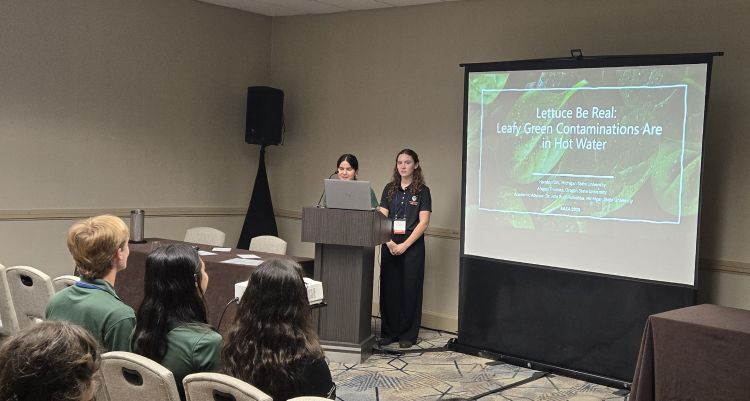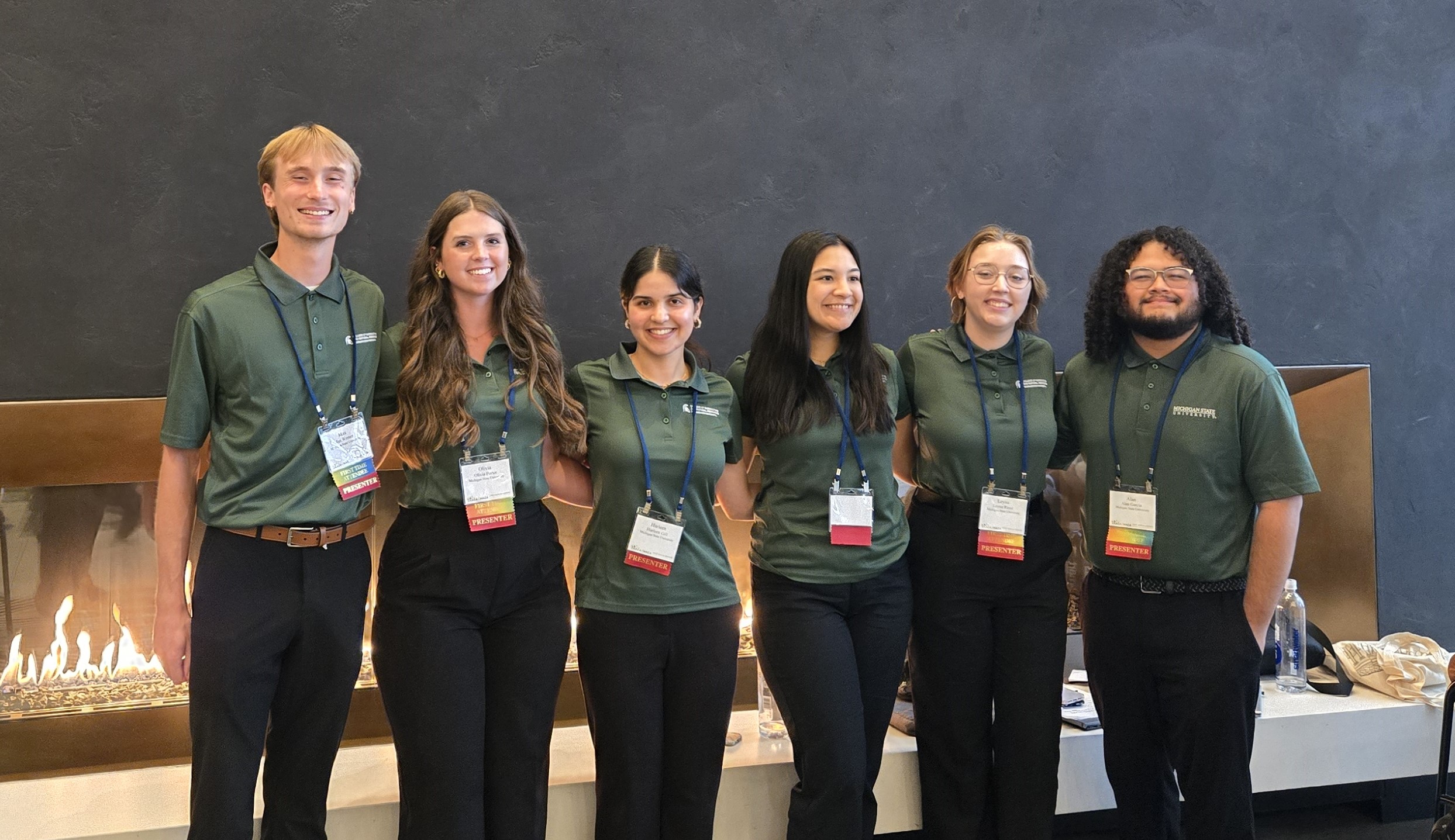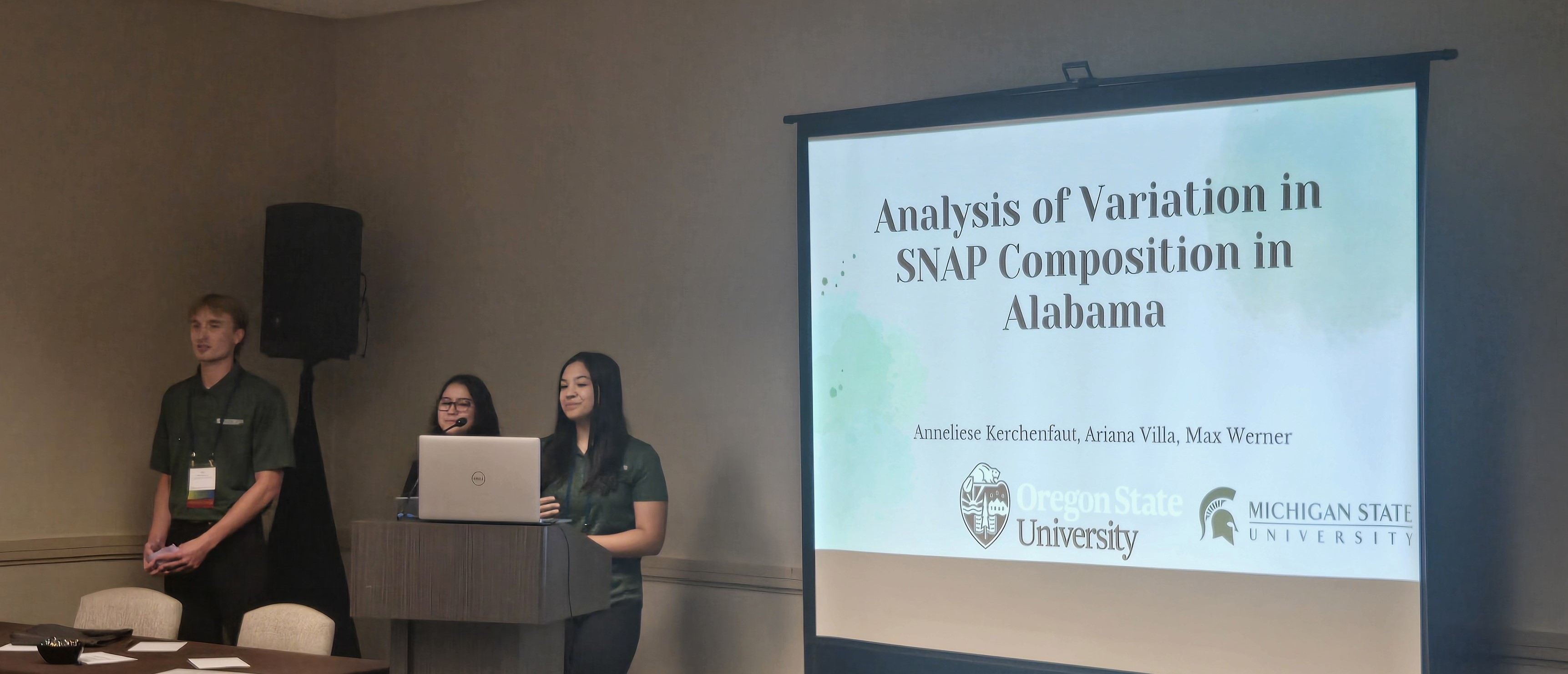Students turn research into impact through undergraduate agricultural economics program
Students from MSU and partner universities gained hands-on research, mentorship and career experience through an agricultural economics program focused on data-driven solutions in food safety, finance and food security.

EAST LANSING, Mich. — A national cohort of students is looking to turn data into insight through participation in a novel, USDA-funded, undergraduate research program focused on teaching and outreach.
“It’s one thing to make a graph. It’s another to explain what it means in the real world,” said Harleen Gill, a senior at Michigan State University participating in the program, funded by a $720,978 grant from the U.S. Department of Agriculture’s National Institute of Food and Agriculture.
The program gives undergraduates hands-on experience tackling issues like food safety, agricultural finance, agricultural outreach/education and food insecurity. Participants hail from MSU, Auburn University, Oregon State University and the University of Georgia. The program is guided by faculty such as Jeta Rudi-Polloshka, Ph.D., assistant professor in MSU’s Department of Agricultural, Food and Resource Economics.
Real-world research with real consequences
To put those goals into practice, the inaugural cohort of 11 students, six from MSU, worked in cross-university teams to develop solutions to real-world problems using data-driven research to manage food systems.

Gill, a food industry management major, examined foodborne illness recalls linked to leafy greens. Her team identified factors contributing to contamination and explored how businesses could strengthen safety practices.
“We used FDA recall data to understand why recalls happened and how companies responded,” Gill said. “It gave me a new awareness of how a recall affects not just a business, but consumer trust and everyday eating habits.”
Another group, including MSU senior Anneliese Kerchenfaut and recent Environmental Studies and Sustainability graduate Max Werner, analyzed Alabama SNAP data to examine participation trends and the impact of events such as school closures and the COVID-19 pandemic.
“We created visuals to show how summer months, when kids are not in school, and the COVID-19 pandemic affected SNAP participation,” Kerchenfaut said. “My group was amazing. We helped each other out and learned a lot about teamwork and data analysis.”
Werner added, “Coordinating with other students and faculty across universities taught me how research really works. Coming from a major that doesn’t usually dive into data-based research, this gave me a completely new perspective.”
Mentorship and industry engagement
Alongside tackling these projects, students received guidance from faculty from the four institutions and industry professionals to connect their research and extension projects to real-world applications.
“Speaking with industry professionals helped me see the wide range of opportunities in economics, food safety and the food industry,” Gill said. “Those conversations helped me figure out the right questions to ask about my own career path.”
Rudi-Polloshka said mentorship was one of the most valuable parts of the program. “It helped students see how their learning translates into professional settings and long-term careers,” she said.
Presenting research on a national stage
The semester culminated in a fully funded trip to the Agricultural and Applied Economics Association’s national conference in Denver, where students showcased the results of their research. For many, presenting at a national forum was the first opportunity to see how their work fit into the larger agricultural and applied economics research community.

“Meeting students from other universities and seeing their projects was a lot of fun,” Werner said. “It gave me a deeper appreciation for how wide-ranging agricultural research can be.”
The conference experience also reinforced the connection between research and professional practice. Gill, who was simultaneously completing an internship at a food manufacturing company, saw firsthand how her work applied to real-world operations.
“Seeing how food safety research applies directly in practice connected everything I was learning,” she said.
Growth, confidence and real-world impact
Many students entered the program with little research experience, but by the end, they were designing projects, analyzing data, presenting findings and connecting their work to tangible outcomes in the food system.
“This program helped me realize I really enjoy research,” Kerchenfaut said. “I’ve already taken on another research opportunity, and I could see myself pursuing graduate studies because of this experience.”
Rudi-Polloshka highlighted the broader significance. “Students learned to present their findings, apply their knowledge in real-world contexts and see how their work can improve consumer safety, support families facing food insecurity and inform data-driven decision-making at the farm. By the time they presented at the conference, they were speaking like professionals.”
Looking ahead: applications for next cohort
The program looks forward to welcoming a new group of students eager to tackle pressing challenges in food systems. Applications for the second cohort are open until November 10.
The 20-week program begins in January 2026, with students paid for their work and presenting at the 2026 AAEA conference in Kansas City, Missouri. It is open to undergraduates at participating institutions, regardless of major or research experience.
Werner encourages students to apply. “It’s the perfect way to add something meaningful to your college experience,” he said.



 Print
Print Email
Email




